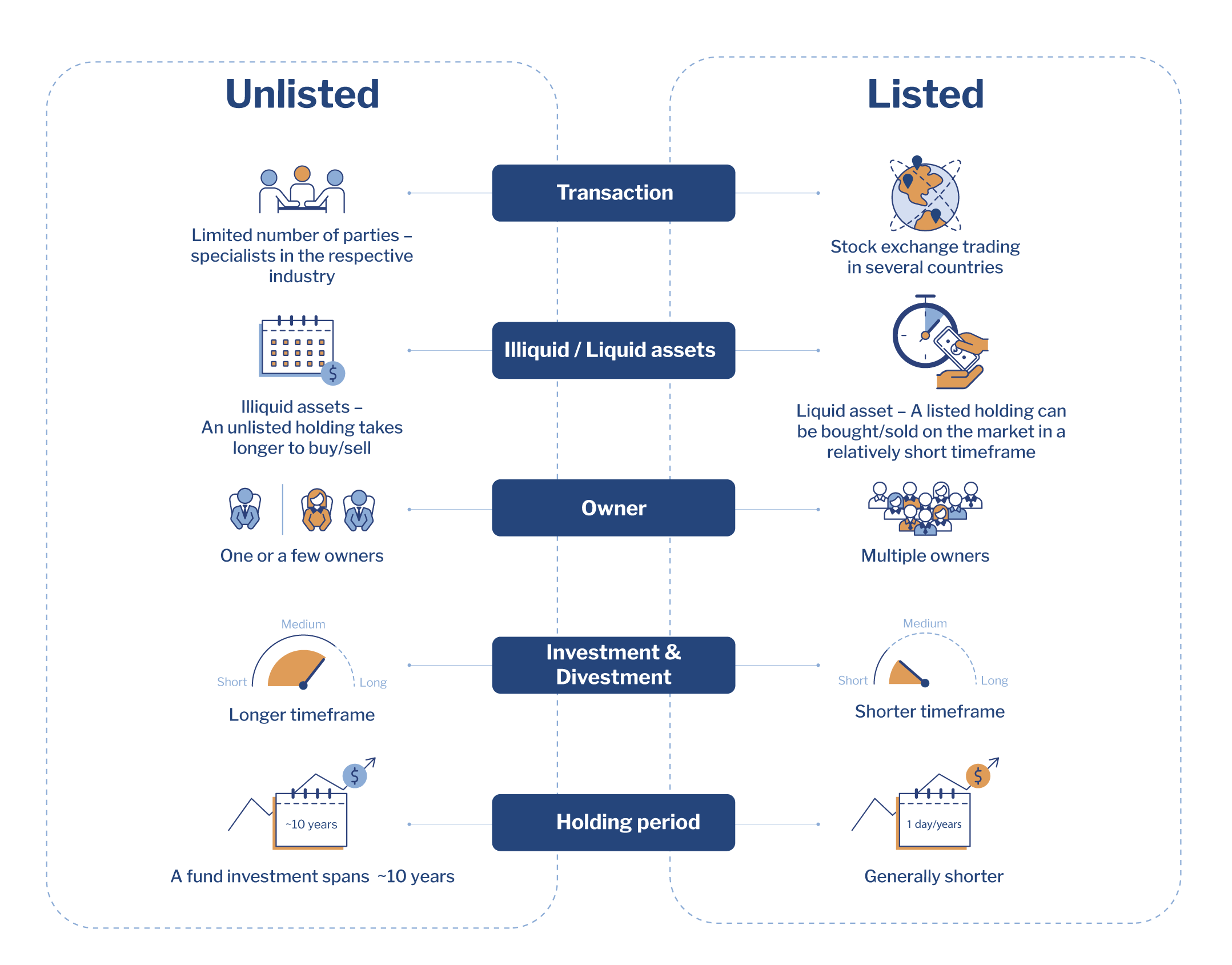AP6’s assignment is to manage funds entrusted to it in the private equity market (unlisted assets) according to the law that governs the Fund’s operations, the Sixth Swedish National Pension Fund Act (2000:193). Fund assets are to be invested such that the long-term high return and adequate risk diversification requirements are met. Investing in unlisted shares (unlisted companies), or the more common term private equity, is significantly different from investing in and managing listed shares/companies. An unlisted company is not listed on a marketplace (stock market) where the company’s shares can be traded. Unlike a listed company, an unlisted/private equity firm is an illiquid investment.
An unlisted/private equity firm has a smaller number of owners who run and develop the company. As there is no marketplace, if the owner/owners wish to sell the company or their shares in it, an agreement on the sale must be reached between the various parties directly in order for the sale to take place. Another alternative is to list the company on a stock exchange. The majority of private equity investments are
in large private equity firms.
To manage the illiquidity associated with investing in private equity firms, a private equity fund has a very long investment horizon. Institutional investors who invest in the fund commit to injecting capital throughout
the life of the fund for a predetermined investment period. They then await distributions as the companies in the fund are divested. This is why an investment in a private equity fund is called a fund commitment. It may take 10–15 years before a fund is fully divested and the investors receive dividends on the capital injected. A co-investment, i.e. an investment in an individual company, usually made together with funds in AP6’s fund portfolio, is normally structured in the same way. In other words, the principal owner (the respective fund) is responsible for running,
developing and, when the time is right, divesting the company.

